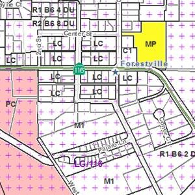Zoning Code Modernization

Zoning Code Has Been Reformatted
The Board of Supervisors approved the reformatting of the Sonoma County Zoning Code on February 9, 2021.
Access the Sonoma County Zoning Code
Zoning Code Background
The Zoning Code is the primary tool for implementing the General Plan and regulating land use and development. The General Plan dictates overarching policy on how and where the community will accommodate physical growth and change, and the Zoning Code applies these policies on a parcel-specific scale, regulating land uses, site planning, and design. The Zoning Code also specifies the type of permits required for various projects and the responsible review authority.
Issues With County Zoning Code

The County Municipal Code contains over 50 chapters, including the Zoning Code (Chapter 26) which is the primary regulatory tool to implement the County’s General Plan. The Zoning Code contains a majority of the land use regulations that govern development, investment and land use throughout the County. The Zoning Code alone is over 550 pages and has not been systematically updated since 1968. The outdated nature of the document creates several issues:
- It is long, cumbersome and difficult for planning staff and the general public to utilize;
- It creates challenges for interpretation and code compliance;
- It creates unnecessary confusion for the public and places demands on staff to explain and clarify code language;
- It uses outdated planning terminology and document structure;
- It lacks basic visual aids such as land use tables; and
- Many amendments have been made over time, resulting in a large and poorly organized document.
Modernization Through Phased Improvements

The Zoning Code will be updated through several incremental updates to improve usability (Phase 1), address required improvements and maintain consistency with state law (Phase 2), and address issues such as process improvements and General Plan implementation, (Future Phases). This approach is outlined in the following table.
Potential Project Phases
|
|
Phase 1: Formatting |
Phase 2: Required Updates |
Future Phases: Elective Updates |
|---|---|---|---|
|
Summary |
|
|
|
|
Specific Actions |
|
|
|

 Translate
Translate